Driving into Dwight, we couldn’t help but pause at the sight of two aged pumps that have seen generations of travelers. These relics mark the spot where Route 66’s heartbeat once pulsed strongest, back when cars pulled in for fuel, an oil check, and maybe a friendly chat with the attendant. Dwight’s pumps aren’t just mechanical leftovers; they’re symbols of a world where the highway was more than asphalt. They represent a ritual: drivers leaning back in their seats while someone else handles the dirty work. Today, the pumps are silent, their dials frozen in time, but their presence still whispers stories of long road trips, roadside picnics, and kids pressing their noses to the window in anticipation of the next adventure. In Dwight, you don’t just see old pumps; you know the spirit of Illinois Route 66 filling stations.
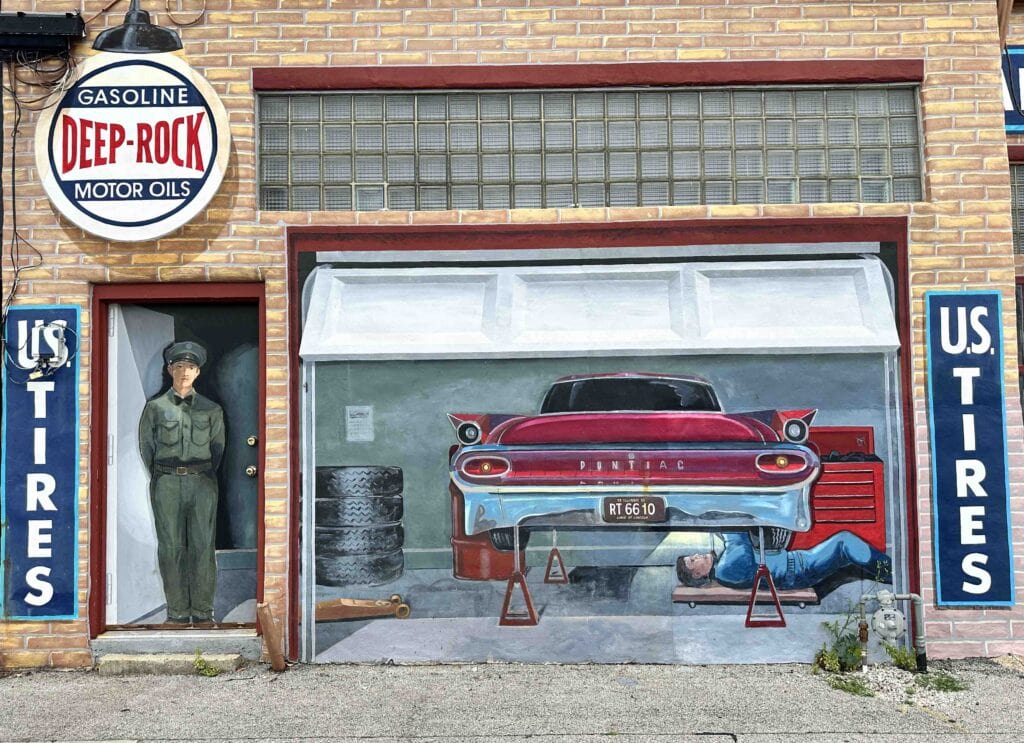
From Service to Self-Serve: The Changing Times
The transition from full-service to self-service didn’t happen overnight, but by the late 1970s, it was clear the old ways were fading. Convenience and the lure of lower fuel prices pushed drivers to pump their own gas, often without giving it much thought. Gone were the days when a uniformed attendant would not only fuel your car but also check your oil, top off the washer fluid, and even wipe the bugs from your windshield. Filling stations had been small hubs of community life, where gossip passed as easily as gasoline. With automation, those moments vanished, replaced by a swift swipe of a credit card and the hiss of a nozzle. It was progress, yes, but progress often comes at a cost. Along Route 66 in Illinois, what remains are ghostly outlines of those lively corners, reminders that sometimes efficiency can flatten the human touch.
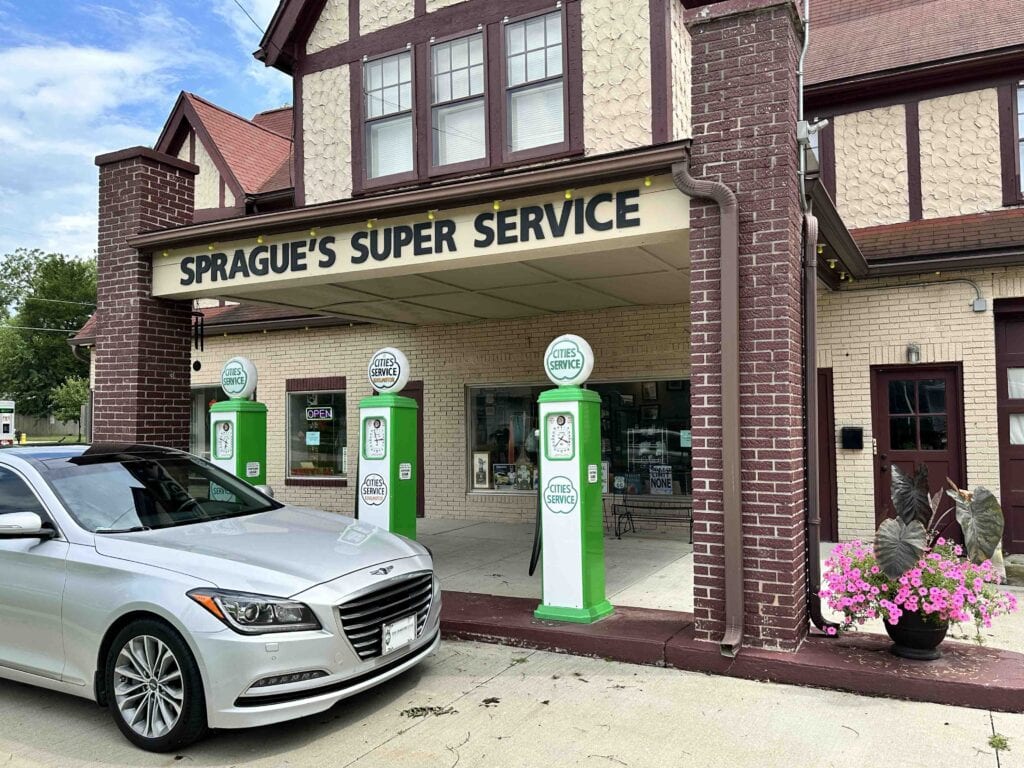
Sprague Station: Preserving Illinois Route 66 Filling Stations
Built in 1931, Sprague Super Service in Normal, Illinois, is a rare survivor of the golden age of filling stations. Once a bustling stop where cars lined up for gas, today it stands as a beautifully restored visitor center along the historic route. Its Tudor-style design was unusual for the time, chosen to make the station feel welcoming rather than purely utilitarian. Travelers stepping inside are now greeted with maps, brochures, and stories, instead of fuel nozzles and oil cans. What makes Sprague Station remarkable is not just its preservation, but its reinvention. It has become a place to reflect, to learn, and to understand just how vital filling stations were to the rhythm of American travel. Instead of being lost to progress, it was given a new purpose, proving that the spirit of the road can adapt and endure.
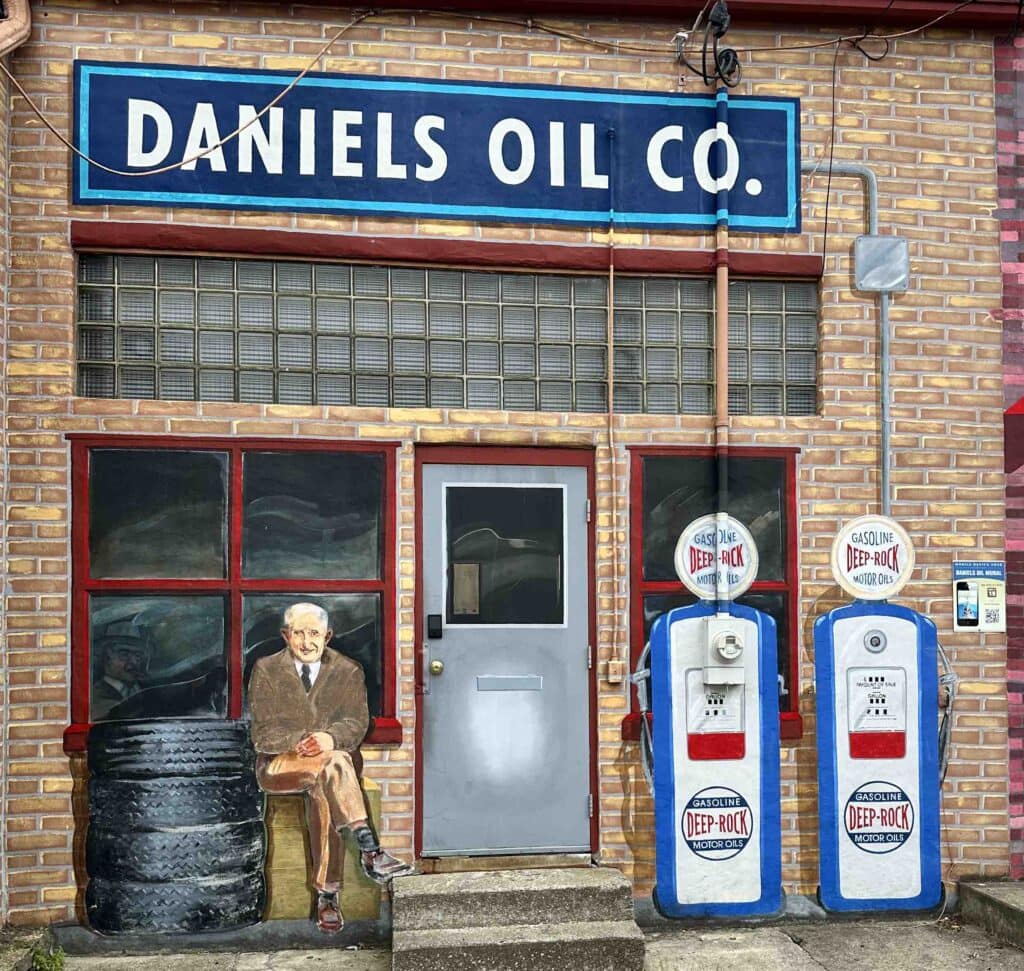
Murals of the Mother Road: Stories on the Walls
Even when the stations themselves are gone, the memories linger on the walls. In towns along the Mother Road, murals have become the storytellers of Illinois Route 66 filling stations. Bright paint splashes across brick, depicting cheerful attendants, classic cars, and neon signs that once lit up the night sky. These works of public art transform alleys and main streets into galleries of nostalgia, reminding us that while buildings may crumble, culture endures in imagination. Murals serve as both preservation and reinvention, inviting new generations to discover the romance of the Mother Road through color and creativity. They are a roadmap painted in reverse, leading us not toward the next town but back in time to when travel was more than miles; it was an experience to be savored, one pit stop at a time.
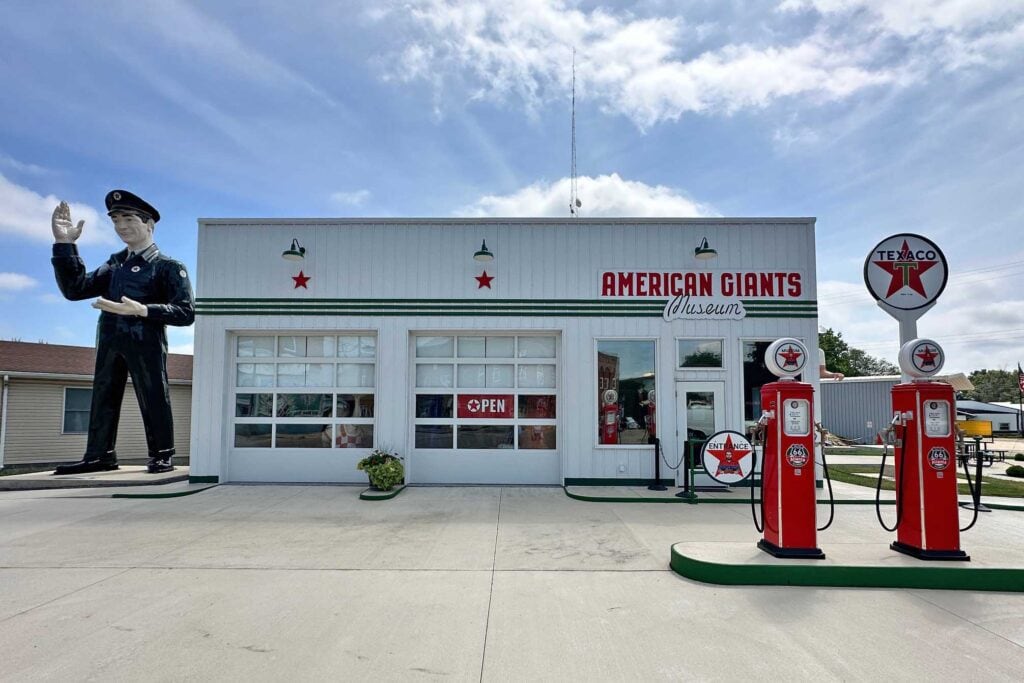
Texaco Station in Atlanta: Home of the Roadside Giants
On the corner of Arch Street in Atlanta stands a carefully preserved 1930s Texaco station. It has since been transformed into the American Giants Museum. But its real claim to fame? It shelters the towering fiberglass giants that once dotted America’s highways. Statues of lumberjacks, cowboys, and service attendants, all crafted to lure drivers off the road and into the lot. These oversized figures were advertising in their most theatrical form. They remind motorists that fuel stops could be as memorable as destinations themselves. Inside, the Texaco station’s tidy bays and retro signage capture the optimism of mid-century travel, when the open road promised adventure and discovery. By curating these roadside icons under its roof, the Atlanta Texaco does more than preserve the memory of filling stations. It magnifies their role in shaping the visual landscape of American road culture.
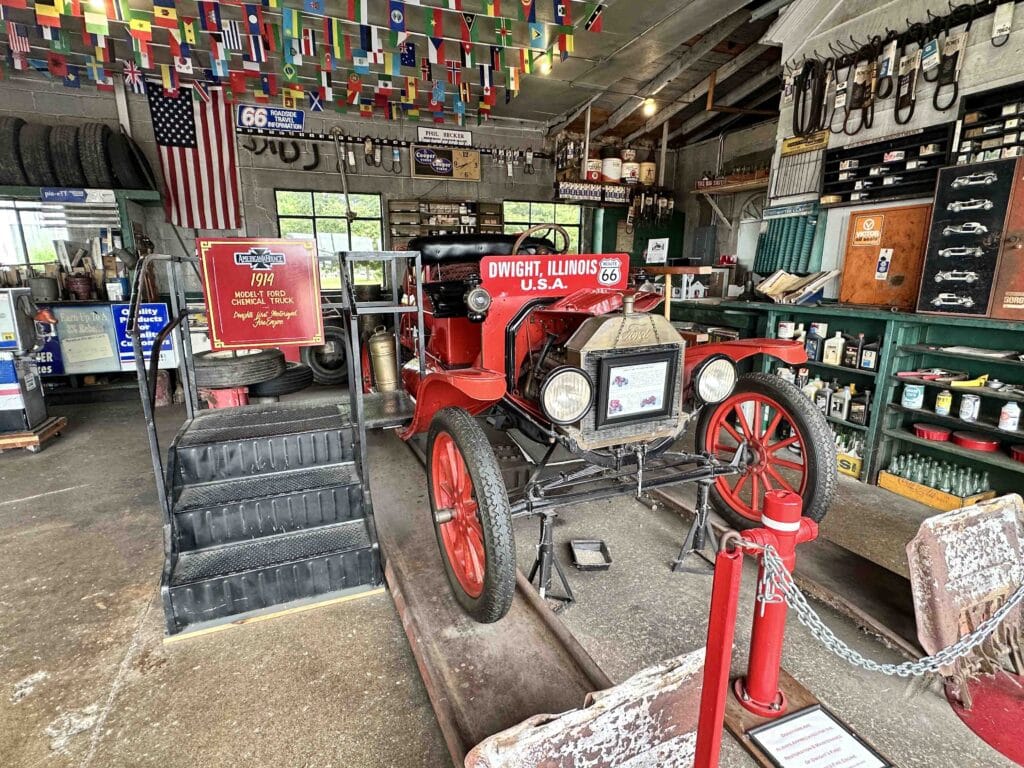
Dwight’s Historic Station: A True Time Capsule
Built in 1933, the Ambler-Becker Texaco Station in Dwight is a jewel for anyone yearning to see what an Illinois Route 66 filling station really looked like. Walk through its doors and you’re greeted by polished wood counters, vintage oil cans, and walls adorned with Texaco memorabilia. The garage bays still hold the echoes of wrenches clinking and tires hissing with air. Unlike many stations that were remodeled or abandoned, this one has been carefully restored to appear as though business paused. It feels less like a museum and more like a service station frozen mid-shift, as if the attendant just stepped out to grab a cup of coffee. In a town already rich with Route 66 history, the Dwight station offers one of the purest glimpses into the life and rhythm of the road, a living reminder of what we’ve lost and what we still cherish.
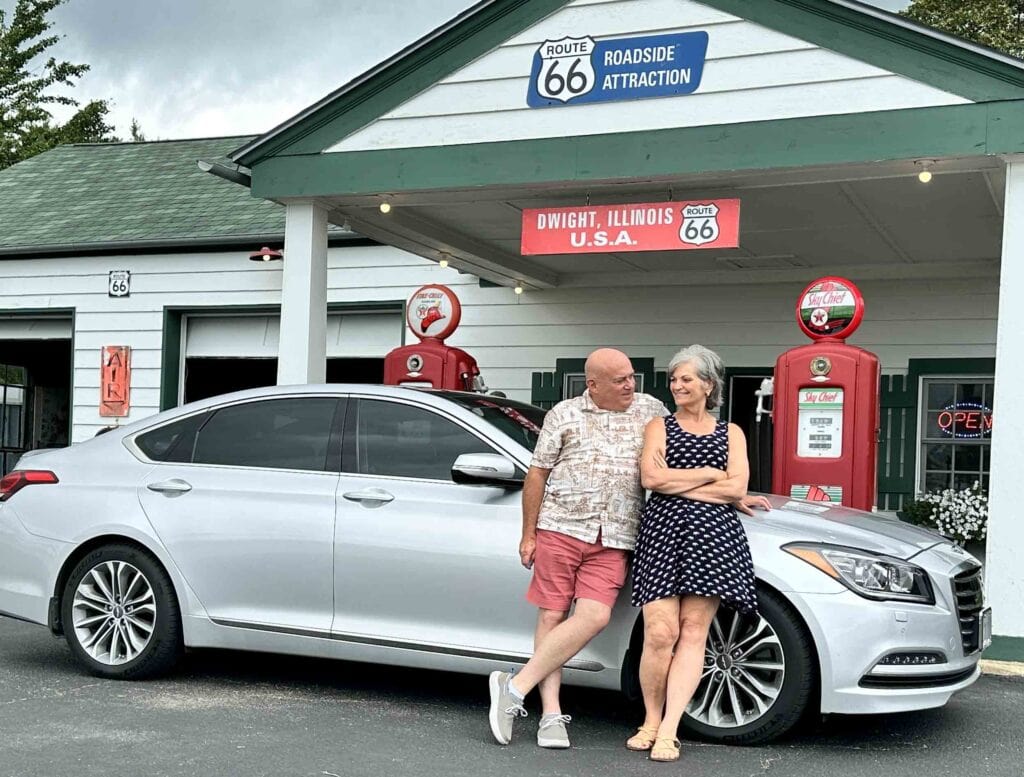
Carrying the Flame: Why Illinois is Route 66’s Gateway
There’s a reason Illinois holds such a special place in the story of Route 66. It was in Chicago that the Mother Road began, stretching westward into legend. Today, the state carries the flame of that heritage by preserving historic landmarks, including Illinois Route 66 filling stations, murals, and roadside attractions. They remind us why Route 66 became one of the most famous roads in America. To travel these miles is to travel through layers of history, mechanical, architectural, and cultural. Standing at these stations, you can almost hear the laughter of families piling into their cars, the squeak of service bay doors, and the chime of the driveway bell that announces another arrival. For anyone yearning to reconnect with the romance of the open road, Illinois is the perfect starting point. It’s not just a drive; it’s a journey back to when travel itself was the destination.


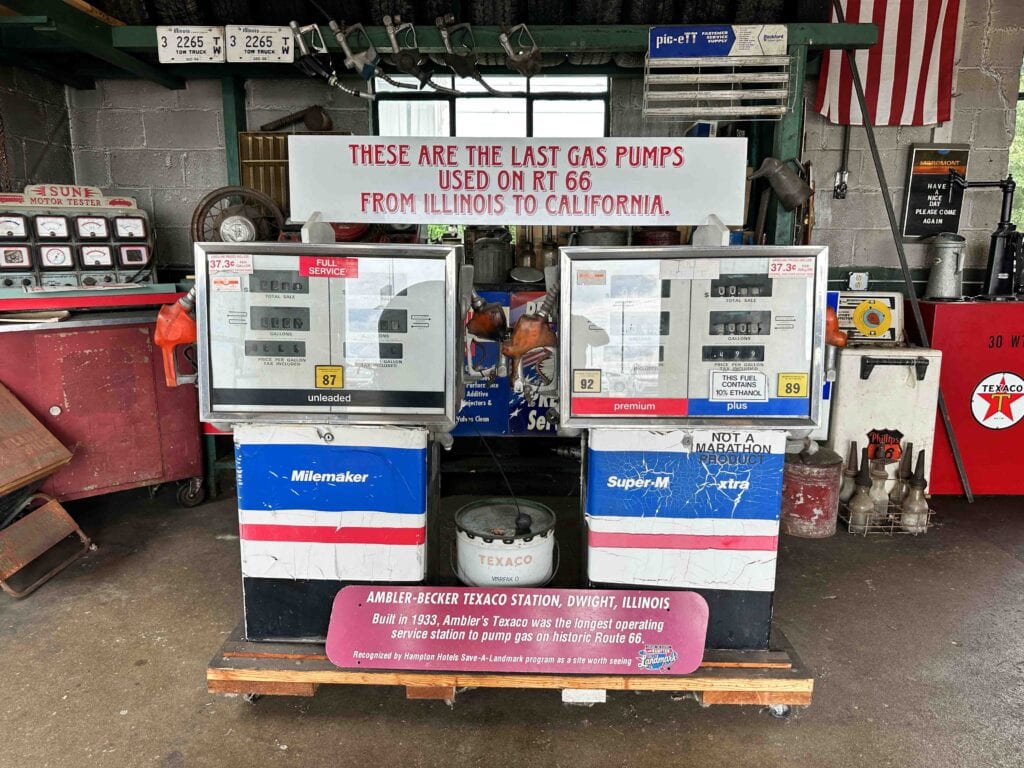

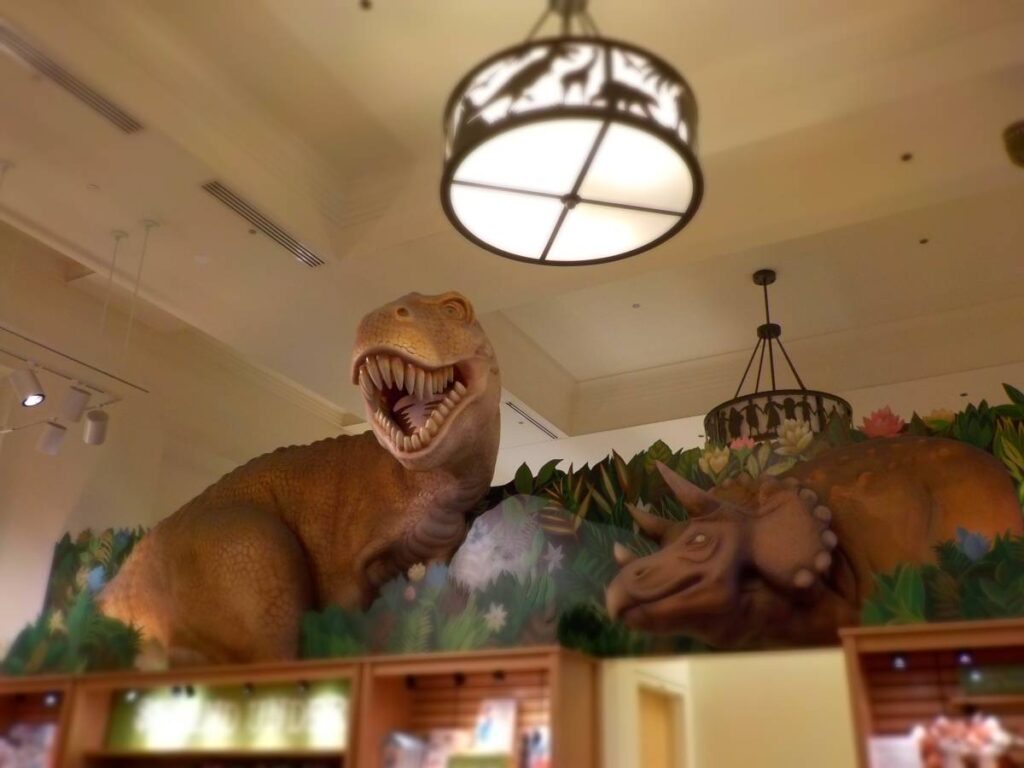
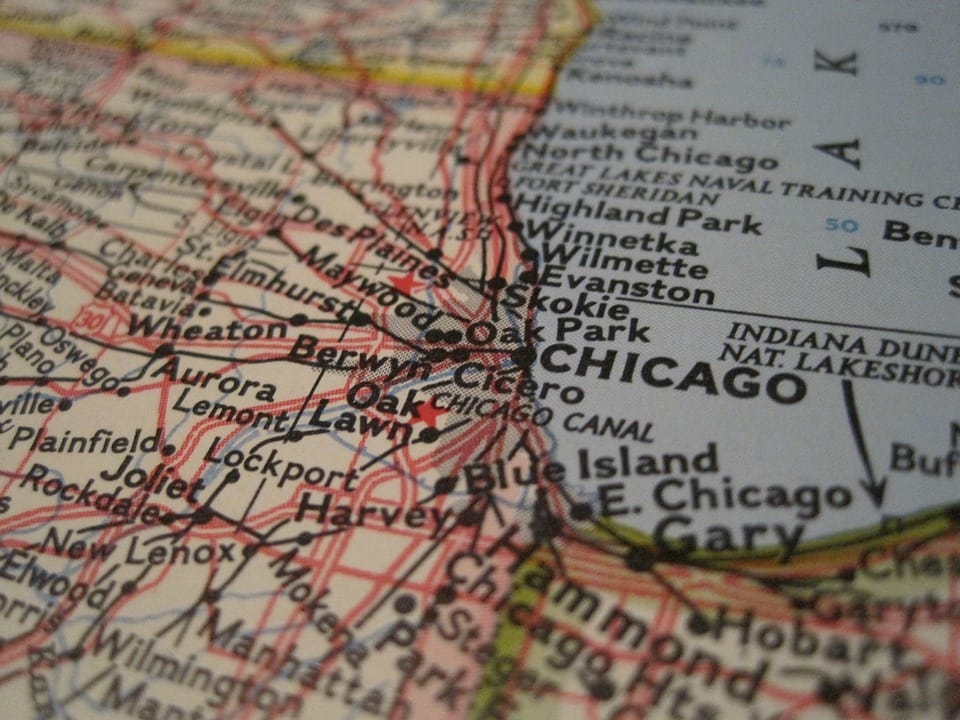
I remember stopping at Sprague’s Super Service in Normal years ago! I had no idea it was once a working filling station. Your post brought those memories rushing back.
That’s wonderful! Sprague’s really captures the spirit of old Route 66, doesn’t it? It’s amazing how these places still tell the story of America’s open road even decades after the pumps went quiet.
I love how these old stations have found new life as museums and coffee shops. It’s like they’re still serving travelers, just in a different way!
Exactly! That’s one of the best parts about exploring Route 66. Each stop feels like a bridge between eras, where the hum of engines has been replaced by the chatter of visitors soaking in the history.
I drove the Illinois stretch of Route 66 last summer. Stopped at the station in Dwight. Those vintage pumps are such an incredible sight!
You picked a great stop! The Dwight station is a treasure for anyone who loves the nostalgia of early motoring. There’s something special about standing beside those pumps and imagining travelers filling up for the long road west.
This article made me want to plan a complete Route 66 road trip. Do you think it’s still possible to follow the old route from Chicago to L.A.?
It sure is! While parts have been replaced by modern highways, most of the original route is still drivable, and the Illinois stretch is one of the best preserved. Start in Chicago and you’ll find historic markers, diners, and plenty of spots just waiting for a photo or two!
My dad used to work at a full-service station in the 60s. He always talked about washing windshields and checking oil with a smile. Reading this brought him to mind.
That’s such a beautiful memory. Those full-service moments were pure Americana, when every stop felt personal. It’s amazing how a story like yours keeps the human side of travel alive.
You said it perfectly. Technology made travel faster, but it also took away that friendly wave and quick chat at the pump. That’s what makes these preserved stations so meaningful; they remind us how connected the road once felt.
I never realized how pay-at-the-pump changed everything. It’s kind of bittersweet, convenient, but not nearly as charming.